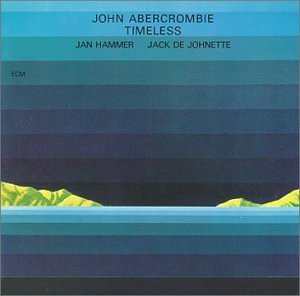
| Artist: | John Abercrombie |
| Title: | Timeless |
| Released: | 1975 |
| Label: | ECM Records |
| Time: | 43:36 |
| Producer(s): | Manfred Eicher |
| Appears with: | Jan Hammer, Jack De Johnette |
| Category: | Jazz |
| Rating: | *******... (7/10) |
| Media type: | CD |
| Purchase date: | 1998.09.22 |
| Price in €: | 18,10 |
| Web address: | www.johnabercrombie.com |